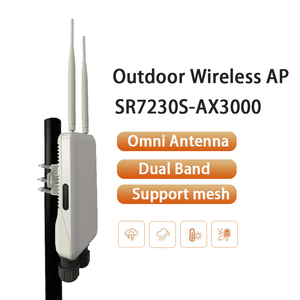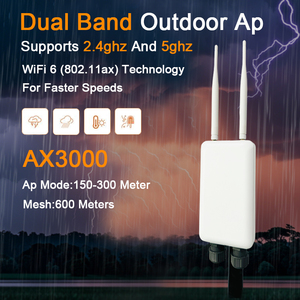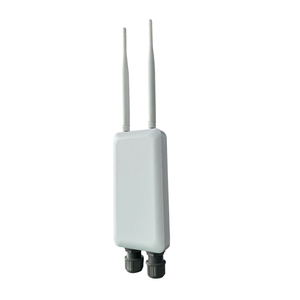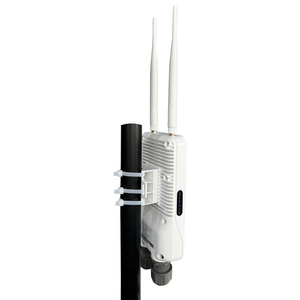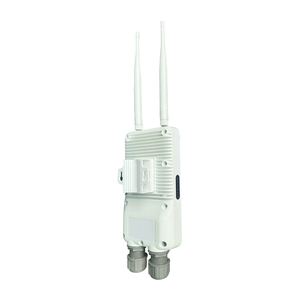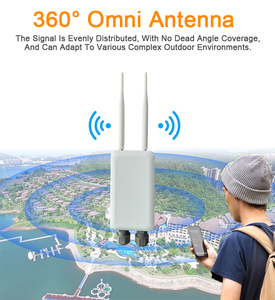Types of WAN failover routers
A WAN failover router allows a secondary Internet connection to take over if there is a failure on the primary network. These routers can detect failures by monitoring the network connection and can automatically switch to the secondary connection. Here are some common types of WAN failover routers;
- Dual-SIM/Cellular Failover Routers: These routers have built-in cellular modems that allow them to connect to the Internet via a cellular network. They typically support dual-SIM configurations, which means they can use two different cellular carriers for redundancy. If one carrier's network goes down, the router can automatically switch to the other carrier's network.
- Modem/ISP Redundancy Routers: These routers are designed to provide redundancy for broadband internet connections such as DSL, cable, or fiber. They typically have multiple WAN ports that can be configured to connect to different modems or routers from the same ISP or separate ISPs. These routers can detect if the modem or router connected to one of the WAN ports goes down and automatically failover to the other modem/router.
- Multi-WAN Load Balancing Routers: These routers have multiple WAN ports that can be connected to different internet connections simultaneously. Instead of failover, they use load balancing to distribute traffic across the various connections for better performance and redundancy. Some models support failover functionality as well, allowing them to switch if one connection fails.
Functions and features of wan failover router
In assessing the functions and features of WAN failover routers, it is essential to note that they offer businesses the ability to keep their network operational and also provide the ability to secure sensitive business data.
The following features can be noted:
- Redundant Networking: A failover router for WANs is typically connected to multiple independent networks or Internet Service Providers (ISPs). This ensures that if one network goes down, access to the other network can be obtained. This access is critical because it allows businesses to constantly keep their lines of communication open with customers and partners.
- Seamless Transition: These routers allow businesses to seamlessly transition from one network to another without losing any data. This is made possible by intelligent switching, which instantly redirects data to the alternative network if the primary network goes down so that business operations are not interrupted.
- Data Integrity: With WAN failover routers, businesses can rest assured that their sensitive data will always remain its integrity will remain intact. This is important for businesses that have to keep their data secure, such as financial institutions.
- Link Monitoring: WAN routers monitor the health of multiple internet connections to identify any potential failures. They test the connections and if one is not functioning properly, the router will automatically switch to the other connection. The monitoring ensures that all links are healthy for data transmission.
- Automatic Switching: If one link fails, the router automatically switches the traffic to another available link, maintaining internet access.
- Failover Configuration: The router must be configured with failover settings, including priority links and conditions for switching so it can handle a failure.
- Notifications: Fault-tolerant routers should notify administrators of link failures so they can investigate and fix any issues.
- Load Balancing: Some advanced routers distribute network traffic across multiple internet links to maximize bandwidth efficiency and network performance.
- Unified Management: They have the ability to be managed from a single interface, which simplifies the management of multiple internet connections.
- Cost-effective Connectivity: Businesses can use cost-effective connectivity providers by balancing the load between links.
- Enhanced Data Transmission: Data transmission speeds can be improved by various means, such as optimizing transmission paths or minimizing latency impacts.
Usage scenario of wan failover router
The wide area network (WAN) router with failover is useful in various industries, including defense, financial institutions, and healthcare. Here are some of the major applications;
- Organizations with branch offices: Companies with branches in different locations use WAN routers to interconnect the networks of the various sites. The routers enable smooth communication and data transfer between the headquarters and the different branches. Additionally, the failover feature ensures there is constant network connectivity for business operation.
- Application performance: Many companies host their critical applications on wide area networks. WAN routers play an important role in application performance by managing traffic and ensuring the application is reachable. The routers with failover preserve application availability, especially during contingent events.
- Backup and recovery: WAN routers help businesses back up their data and recover in case of loss. They provide network connectivity for data backup jobs. The failover feature ensures data is not lost and can be recovered if disaster strikes.
- Data replication: Many businesses need to replicate data across various locations. WAN routers provide a medium to replicate data. The failover system ensures that data integrity is maintained and there is no disruption in the business data channel.
- Financial services: The financial sector depends on wide area networks to connect and communicate between branches. WAN routers serve to connect all the financial institutions together. The routers provide a means for performing financial transactions, operating trading platforms, and safeguarding financial applications.
- Healthcare: Hospitals use WAN failover to interconnect various healthcare facilities. They allow secure transmission of medical information, accessing electronic health records, telemedicine, and many other healthcare operations.
- Defense and Government Agencies: Various government agencies depend on wide area networks to interconnect officials and serve vital government operations. WAN routers with failover capabilities are used to maintain communication and access mission-critical applications.
How to Choose Wan Failover Routers
When looking for a WAN router with failover, several factors should be considered to get the right one that suits business needs.
-
Business Requirements
Consider the applications and services that are particularly important to the company. These are the kinds of things whose availability should be ensured even during network failures. Moreover, pinpoint the current requirements, making sure to take into account bandwidth consumption and traffic patterns. Considering future growth is a must; thus, choose a router capable of scaling as the business expands.
-
Connectivity Options
Redundant connectivity is a router must-have. Opt for a router that supports multiple WAN connections through wired, cellular, and satellite links. A diverse range of failover options should be available on the router to suit various business environments.
-
Router Performance
Choose a router whose processing power and memory can efficiently handle the required bandwidth and concurrent sessions without degrading performance. This ensures smooth operation, especially during peak times or under heavy load.
-
Failover Capabilities
Select a router that provides automatic failover capabilities, immediately switching to a backup connection if the primary link fails. The failover process should be seamless, requiring no manual intervention and no downtime for users and clients.
-
Routing and Traffic Management
Pick a router that supports dynamic routing protocols, such as OSPF and BGP, so it can adjust its routing tables automatically during connection failures. Traffic management features will optimize bandwidth utilization and ensure critical traffic gets priority during an outage.
-
Security
Security should be integrated into the router to protect data and applications during a failover. Any router under consideration should have support for VPNs, firewalls, intrusion detection/prevention systems, and robust access controls to safeguard the business's network and data.
-
Monitoring and Management
Pick a router that comes with tools for monitoring and managing network performance, such as logging, alerting, and reporting features. These tools will enable IT staff to identify potential issues early, troubleshoot problems quickly, and optimize the network for better performance.
-
Vendor Support and Reputation
Finally, check that the vendor offers reliable after-sales support; they should also be a reputable supplier of WAN routers with failover. Choosing a router from a vendor with a proven track record can help businesses avoid potential pitfalls and ensure they get a router that meets their needs.
Q & A
Q: What other techniques can ensure internet connection reliability in businesses aside from WAN failover?
A: Beyond WAN failover, techniques include network optimization, implementing redundancy at all network layers, and proactive monitoring and maintenance to ensure timely resolution of issues.
Q: Is there a difference between WAN failover and WAN load balancing?
A: Yes, there is a difference. WAN failover prioritizes maintaining internet connectivity through redundancy, while WAN load balancing aims to optimize bandwidth and performance by distributing traffic across multiple connections.
Q: Can a single source be used for WAN failover routers?
A: It is not recommended to use a single source for WAN failover routers because redundancy is essential for WAN failover - using two different internet sources enhances reliability and ensures failover capabilities.
Q: Do WAN failover routers require additional configuration for remote access?
A: It depends on the router. Some WAN failover routers may have remote access features that need configuration, while others might ensure remote access through existing configurations without additional setup.



























